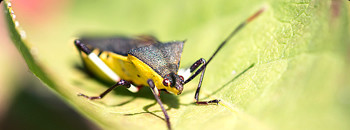Cathie Lavis is a professor of horticulture at Kansas State University. Her expertise includes landscaping, arboriculture, irrigation, and landscape contracting. She provides insight for homeowners and gardeners on plant care, selection, and more.
Although there really is little we can do to safeguard plants from harsh weather, proper maintenance throughout the growing season will certainly help protect plants from some of the damage they may receive from a devastating ice or snowstorms.
Ice
Ice is heavy. Depending on the thickness, it can add up as much as 25 percent of the weight of the branch. If wind accompanies the storm, the chance of damage or loss of branches increases exponentially.
Do not attempt to remove the ice; instead, allow it to melt. Attempts to remove heavy snow or ice are likely to cause even greater damage. Damaged branches may be more susceptible to future insect and disease problems. (Be sure to keep a watchful eye during the spring months for early detection of these potential problems.)
Snow
Wet, heavy snow can be a potential problem, particularly to evergreens or hedges. Many plants do not have strong stems that allow them to withstand the weight of snow, particularly plants that have been sheared as the flat tops do not shed the snow allowing it to pile up. Sheared boxwoods or yews are especially prone to snow-load damage. Heavy snow or ice will force the branches downward and leave gaping holes in the shrub that might be permanent. In many cases, a broom will work to remove the snow before it becomes heavy enough to weigh down the branches and cause permanent damage.
Support and Protect
When planting trees, shrubs, or perennials, staking or providing other means of support is important as they can be uprooted under the heavy weight of snow or ice. Small shrubs can be protected with wooden crates or wooden tepees made from strong, yet pliable tree branches. Smaller trees, particularly evergreens, can be tied with a cord wrapped around the entire plant, which gives branches support from each other.
In the future, you should avoid planting any type of fast growing trees with poor structure. Fast growing trees such as Chinese elm, Siberian elm, Poplar, Silver maple, Birch, Willow and Japanese maple have weakly developed wood, and, these trees generally develop V-shaped crotches. These poorly structured trees tend to have more damage than trees with strong central leaders, such as, pine, spruce, gingko, and sweet gum during winter’s harsh conditions.

